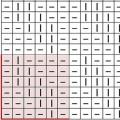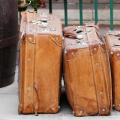Application "vegetables and fruits" for children of different age groups in kindergarten. Summary of GCD for application in the middle group
Natalia Rybakova
Summary of the integrated lesson in visual arts
Integration: getting to know your surroundings
visual activities
Target: We expand children’s understanding of the world around them,
We develop curiosity and the desire for knowledge.
Tasks: 1. We continue to develop ideas about autumn as a season.
2. Reinforce the concept « Vegetables»
3. Developing RAM
4. Development of creativity in children
Material and equipment:
Basket with vegetables
Paper (color)
Sheets of white paper
Scissors, glue
Stage I. Organizational
Educator: Guys, autumn time has come. The time of year is autumn.
Educator: What gifts has autumn brought us?
Children: children's expected answers (vegetables and fruits)
Educator: What is it « Vegetables» Guys?
Children: children's expected answers (tomatoes, potatoes, carrots, cucumbers)
Educator: Well done! How many vegetables you know!
Stage I Motivational
Surprise moment
IN group includes Autumn
Autumn: I greet you, friends! I'm glad to see everyone again!
It’s time for me to come and bring you gifts!
In the basket vegetables are lying! The fruits of the earth, water and sun!
And those who vegetables eating will save your health for a long time!
Educator: Thank you Autumn for the gifts! We all want to grow up healthy, so I will honestly say that we all eat vegetables!
Autumn: I give you a basket, friends! I went to other guys! But I’ll come visit you again and bring you a basket of fruit!
Stage III. Basic
Educator (addresses children): That's how beautiful Autumn is! She brought so much!
(the teacher takes one from the basket vegetable and asks the children)
Educator: It’s red, ripe, round, and my name is….
Children: Tomato
Educator: Sweet, crunchy, I’m sitting deep in the ground, I’ll save your teeth, I’m growing for you guys, feel free to eat me, I’m very useful.
Children: Carrot
(the teacher shows vegetables for children)
Educator: Friends, where do they grow? vegetables?
Children: In the garden
Educator: Right in the garden! Vegetables fruits of the earth, water and sun!
Educator: Guys, what shape is a tomato?
Children: expected response from children (round)
Educator: What color is the tomato?
Children: (expected response from children) red
Educator: Guys, what shape are carrots?
Children: (expected answer) looks like a triangle
Educator: What color are carrots?
Children: (expected response from children) orange
Educator (picks up a square piece of paper) Suddenly the problem arose: how to make a circle out of a square?
Children: (expected response from children) Trim corners
Educator: That's right guys! Carefully trim all four corners
Educator (paper in hand rectangular shape) Guys, how do you cut a carrot?
Children (expected response from children) also cut off the corners of the rectangle
Educator: Well done! Let's work together in the garden!
Children start cutting vegetables and applique.
At the end classes review the children’s work and give each child their own positive assessment.
Feedback: Clarify with each child what was difficult and what was easy (for further individual work).
Publications on the topic:
Goal: Expanding ideas about space among older children. Educational areas: Artistic and aesthetic development, cognitive,.
Summary of the lesson on appliqué in the senior group “We divided the orange” Summary of the lesson on appliqué in the senior group “We divided the orange.” Objectives: To enrich children's ideas about various qualities (soft,...
Summary of a lesson on appliqué in the senior group “Rainbow of Colors” Goal: To teach children to create a mosaic design using multi-colored scraps of paper. Objectives: 1. Formation of the ability to invent independently.
 “Summary of a lesson on application in the senior group “Fairytale Bird”-2. Goal: to teach children to make appliqué according to the pattern using colored ones.
“Summary of a lesson on application in the senior group “Fairytale Bird”-2. Goal: to teach children to make appliqué according to the pattern using colored ones.
Summary of a lesson on appliqué in the senior group “Travel on a Magic Carpet” Objectives: Teach children to cut out paper using a folded accordion. Strengthen the ability to cut a circle. Develop memory, attention, orientation.
Goals: To dramatize the search for visual and expressive means to create a simple plot in paper appliqué, to support creativity.
Municipal autonomous preschool educational institution "Kindergarten No. 89"
GCD in middle group.
Application “Vegetables and fruits”
(collaboration technology)
Compiled by:
Teacher of the first qualification category
Pukhova Antonina Aleksandrovna
Berezniki, March 2015
Lesson in the middle group.
Application “Vegetables and fruits” (collaboration technology).
Goals:
*teach children to cut vegetables and fruits along a given contour, optimally placing them on a sheet of paper
*encourage children to distribute activities and material
*maintain the desire to act together, develop the habit of waiting
Progress of the lesson:
For joint activities in pairs it is necessary to organize the spatial environment (arrange tables in a semicircle), create a problem situation.
Guys, what time of year is it now? (autumn)
What ripens in autumn in gardens and vegetable gardens? (vegetables and fruits)
What vegetables do you know? (potatoes, tomatoes, zucchini, beets, carrots, cabbage...)
We have a rich harvest on our site. We will collect this harvest on a tray. To do this, we will make an application for you. Vegetables and fruits must be carefully cut out and pasted onto a plate so that each vegetable can be seen and not stuck to one another. This work is labor-intensive and we have little time, so we work in pairs. Each child chooses a partner. And now you must distribute responsibilities: one will cut out the parts, and the other will glue. Guys, if one of you doesn’t make it in time, you need to wait for the other one. It is also necessary to switch roles: if one of you cut out two figures, then you need to switch roles.
You guys are great. Everything worked out for you because you did the work together, didn’t quarrel, and came to an agreement. Yours beautiful work we will put them on display for your parents to admire.
Did you guys enjoy working in pairs? We will continue to cooperate with you in the future.
GCD for the NGO “Artistic Creativity”. Application “Cucumbers and tomatoes lie on a plate” in the senior group “Bee”. Teacher Krivenchenko S.A.
Program content : consolidate the ability to distinguish vegetables; continue to practice the ability to make round and oval-shaped objects made of paper in the form of squares and rectangles, cutting corners using a rounding method; develop the ability to carefully paste images.
Material:riddles, poems, dummies of vegetables, a circle of white paper; blanks from colored paper for cutting vegetables.
Integration of educational areas: “Cognition”, “Artistic creativity”,
Move.
1. Organizational moment.
Riddle: There's a carrot, there's cabbage, there's a strawberry smell, it smells delicious.
And, friends, we can’t let the goat in there. (Garden.)
That's right, this is a vegetable garden. Who guys have a garden? What does your family grow in their gardens? Guys, what vegetables do you know? (children's answers.) You and I will go visit these vegetables to learn some of the secrets of their growth, human use for food, and, of course, we will learn about the medicinal and nutritional qualities of these vegetable crops.
2.Reading a poem ny.
In the garden.
According to mysterious laws, still incomprehensible,
The cucumber grows green, next to it grows red.
Blue eggplants next to yellow melon.
And the earth is black to black, but the earth is the same for everyone.
O. Bundur
Gardeners.
How vegetables will not be born without our help.
As soon as spring has arrived, we plant seeds.
What a garden! People are surprised.
The sun warmed the earth, a grain sprouted
Cucumbers, carrots and onions suddenly came out of the ground.
What a garden! People are surprised. L. Nekrasov
Guys, we will go on a trip to the fabulous Garden Land, in which vegetables will tell you the most interesting stories about their adventures.
3.Guessing riddles:
1. Its cloves are eaten raw and added when pickling tomatoes and cucumbers. (garlic.)
2. Our piglets grew up in the garden,
Sideways towards the sun, crochet ponytails.
These piglets play hide and seek with their dreams. (cucumbers.)
3. How riddles grew in our garden bed -
Juicy and large, so round.
They turn green in the summer, and turn red in the fall. (Tomatoes)
4. Physical exercise “Grasshoppers”.
Raise your shoulders, jump, grasshoppers,
Jump-jump, jump-jump, sit down, eat some grass,
Let's listen to the silence. Hush hush. Jump high on your toes easily.
5. Application.
The teacher offers to examine the vegetables, asks about the shape of the vegetables, and clarifies the cutting techniques: tomatoes from a square, cucumbers from a rectangle. Children talk about the procedure for completing the application and get to work.
6. Summary of the lesson.
What we talked about today.
What did you depict on the application?
About to perform applique "Vegetables" First, let's think about what our main goal will be. This is how I develop children’s hands and eyes, so it’s not a matter of chanting poems about vegetables or explaining the peculiarities of growing them to children. I will focus on . Most vegetables have a round shape - let's use this to practice shading in an arc and in a circle. And then also cut out colored vegetables - contour skills.
But then what? Why do we need a bunch of cut vegetables?
But why - we’ll cook cabbage soup. Or even better - borscht! Let's make a soup applique. Great plan, something to fight for.
Application of vegetables in soup
This year I conducted classes on the topic “coloring vegetables for soup” with both preschoolers and first graders - everyone really liked it. The guys were enthusiastically replenishing their supplies of vegetables.
 Let's start with . I understand that peeled peas are put into the soup, and potatoes too, but in the conventional dimension of our coloring pages we will not peel and cut paper vegetables, but cook them as is. So, we colored and cut out peas, stretched our hands and remembered how it is crosshatch. Now - a tomato. That is, I don’t give all the vegetables at once, but one by one - if you complete one task correctly - you get the next one. While we were hatching the tomato, my hand got tired from the circular hatching - the carrot will be next - we paint it lengthwise.
Let's start with . I understand that peeled peas are put into the soup, and potatoes too, but in the conventional dimension of our coloring pages we will not peel and cut paper vegetables, but cook them as is. So, we colored and cut out peas, stretched our hands and remembered how it is crosshatch. Now - a tomato. That is, I don’t give all the vegetables at once, but one by one - if you complete one task correctly - you get the next one. While we were hatching the tomato, my hand got tired from the circular hatching - the carrot will be next - we paint it lengthwise.

Then a couple of potatoes - shading along an uneven oval:

I draw the potato coloring pages on brownish wrapping paper; it only takes a little bit of coloring, and that’s what’s difficult.

And the apotheosis - cabbage!

Cabbage coloring page I invented it only this year and I’ll tell you straight - the children are all eager to get a big harvest head of cabbage.
 While they are painting and cutting out, I go up and draw the outline of a pot for everyone in the album. Now you can think about the composition - first, just fold the vegetables without gluing them. I suggest starting in layers - first along the bottom, then higher, and not haphazardly - randomly.
While they are painting and cutting out, I go up and draw the outline of a pot for everyone in the album. Now you can think about the composition - first, just fold the vegetables without gluing them. I suggest starting in layers - first along the bottom, then higher, and not haphazardly - randomly.

Let's color the bay leaf
Some students even manage to beautifully combine the colors of vegetables - so that there are different ones nearby that do not merge in color. If there is a lot of space left, please use a bay leaf (remember the correct shading), add mushrooms - I, as a convinced vegetarian, suggest adding richness to the soup not with meat, but with mushrooms.
Abstract open class by application
"Canning vegetables"
Middle group
Goals: Continue introducing children to round and oval shaped objects.
Tasks: Learn the techniques of gluing, spreading glue on the back of the form, working on oilcloth, pressing the forms to the paper with a napkin and your entire palm. Arouse interest in the activities of adults when collecting vegetables in the garden. To consolidate knowledge about vegetables and methods of preparing them.
Material: glue, brushes, napkins, jar silhouettes, vegetable models, steering wheel, bunny, cut-out pictures.
Progress of the lesson:
1.Surprise moment.
The doll Marina brings a basket to the children in kindergarten, and we will find out what is in it if we guess the riddles:
He's green, he's just a sight for sore eyes,
It is both fresh and salty, simply delicious... (cucumber) (color, shape)
The signor stood in the garden bed, red as a traffic light.
Goats see red - there is no way to the garden... (tomato)
Guys, what can you call these gifts together, in one word? (vegetables)
Where do vegetables grow? (in the garden, in the country, in the garden)
Now you and I will also go to the garden to collect vegetables.
- Game "Harvest"
We take baskets
We sing songs in chorus:
Gather the harvest
And stock up for the winter ( held hands feet on the path, let's go in circles)
We guys are great,
Picking cucumbers
Tomatoes and peas
Our harvest is not bad. ( bending over, simulating picking vegetables)
We're going, we're going home
By truck.
Open the gates
The harvest is coming from the field.
Oh, open it
The harvest is coming from the field. ( line up behind the teacher / driver / let's go)
- Game "Cut pictures"
Guys, while we were driving the truck, all our vegetables got mixed up, let's collect them and admire how beautiful they are...
(children are divided into 2 teams, each with their own image)
4. Making the application “Canning vegetables”
Finger gymnastics “Vegetables”
The girl Marinochka has vegetables in her basket.
(Fold your palms into a “basket”)
Here I placed the pot-bellied zucchini on its side, and deftly placed the pepper and carrots. Tomato and cucumber. (Bend your fingers, starting with the thumb)
Well done, Marina. (Show thumb)
- Completing of the work.
Pay attention to the technique of doing the work: use a napkin to remove excess glue, apply glue to the wrong side of the template using a brush...)
- Summarizing. All “jars are displayed on a shelf in the pantry (we attach them to the board with magnets). The children are happy that they have a large supply of vegetables, enough for everyone to try: fathers, mothers, and children.”
Municipal autonomous preschool educational institution
Child Development Center - Kindergarten No. 18 “Rodnichok”
 Relief knitting patterns with diagrams and descriptions Knitting patterns for dark yarn in leaf shape
Relief knitting patterns with diagrams and descriptions Knitting patterns for dark yarn in leaf shape How to knit a tanker’s helmet: description and materials
How to knit a tanker’s helmet: description and materials Wife kicks her out of the house: advice from a psychologist Man periodically kicks her out of the house
Wife kicks her out of the house: advice from a psychologist Man periodically kicks her out of the house